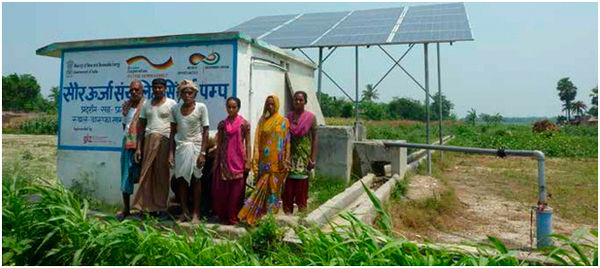Knowledge fuels change
For over a decade, Energypedia has shared free, reliable energy expertise with the world.
We’re now facing a serious funding gap.
Help keep this platform alive — your donation, big or small, truly matters!
Thank you for your support
SPIS Toolbox - Credit Policy: Risk Analysis
Credit Policy: Risk Analysis
Every SPIS demands a specific solution, since it combines a new energy providing technology with irrigation and cropping systems which can be manifold in its combination.
Therefore, there are no standard “off the shelf” solutions, a thorough loan analysis is indispensable, especially when starting with this loan type.
Typical financial advantages when changing to solar powered irrigation could be:
- higher profitability when introducing high value crops and higher degree of irrigation efficiency;
- reduced and stable current energy costs due to change in energy source (no transport costs or risks for supply of fuel or lubricants);
- environmental friendly technology (avoid water losses, use of water saving technology, prevent diesel pollution, etc.) can give access to subsidized funds or grants.
SPIS, being based on agricultural activities, follow specific liquidity patterns, such as:
- irregularity, seasonality;
- farming-household mix;
- several cash generating activities;
- system risks (climate, weather, pest, disease, prices).
This requires specific agri-lending tools. Thereby the following risks should be considered:
Financial Risks
- High initial capital investment requirements lead to higher credit risks resulting in longer repayment periods and higher interest rates for clients comparing to alternative energy sources;
- Financing agriculture as such has specific risks.
Technology Risks (see the following modulesDESIGN, SET-UP, MAINTAIN for further details).
- High value cropping and water saving irrigation technology is needed;
- Pumps have to be “oversized” in order to meet peak water demands;
- Management capacities to handle the technology should be available;
- Daily operating hours are limited;
- Feasible PV-generator and pump dimensioning implies orientation towards low pressure output;
- Suitability of location for SPIS;
- Construction risk;
- Over-use of water threatens long term cultivation as well as the environment.
Framework Risks
- Long term availability of water and good groundwater management is indispensable; (see SAFEGUARD WATERmodule)
- People involved – loan officers, producers, (gender!) technology and service providers, agricultural advisors;
- Theft or misuse.
Outcome / Product
- Credit risk policy, considering thorough single case assessment, adequate portfolio management and pro-active closing of the information gap.
Data Requirements
- Specifics to agri-lending liquidity patterns of borrowers;
- Asset structure of borrowers (potential for collateral);
- Cropping patterns and profitability of crop types (alternative markets and water availability);
- Organization & management reliability (see MAINTAINmodule);
- Technology risks (see DESIGN module);
- Re-financing options for the region.
People / Stakeholders
- Management of financial service providers;
- Public entities promoting or/and subsidizing SPIS initiatives;
- Associations of producers / potential borrowers;
- Market analysts/consultants;
- Technology providers;
- Service providers;
- Research and training institutions (e.g. environmental agency).
Important Issues
- Consider SPIS specific risks with respect to their longterm financing requirements, technological implications (cf. DESIGNmodule), environmental impact (cf. SAFEGUARD WATERmodule) and framework conditions.
- Assume manifold SPIS settings - there is no “off the shelf” loan analysis.
- Minimizing risks can result in potentially high(er) transaction costs for all parties involved, compared to conventional pumping systems.
</div>




















